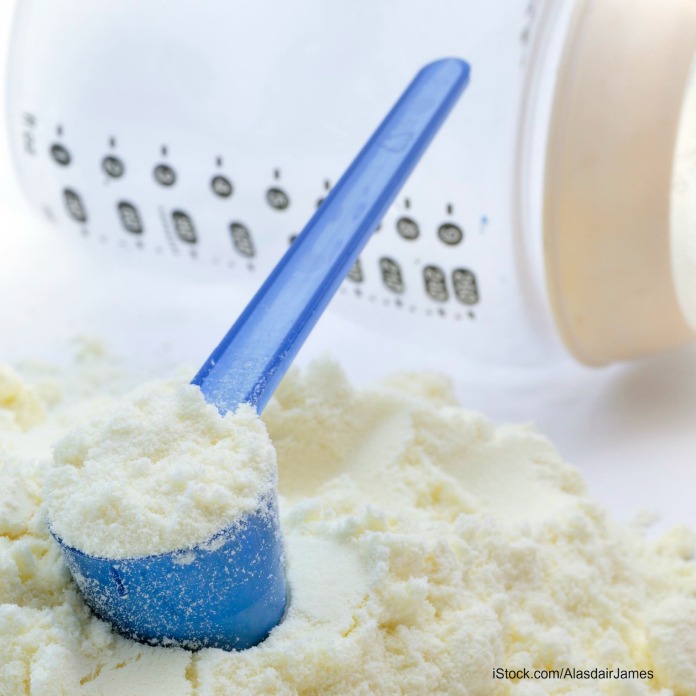According to Friends of the Earth, infant formulas sold in the United States contain nanoparticles, which are very small compounds. Research shows that these nanoparticles may pose threats to human health.

Friends of the Earth commissioned independent lab analysis that found these particles in six infant formulas that were tested. These nanoparticles are not indicated on the label and they are not regulated by the FDA.
The FDA is supposed to regulate baby formulas and making sure they are safe, but the government does not approve the safety of infant formulas before they are marketed.. They only require that the formulas meet nutritional requirements and are screened for pathogens. The rules don’t include screening for potentially toxic synthetic ingredients.
The products that were tested and found positive for nanoparticles include Gerber® Good Start® Gentle, which had Nano-hydroxyapatite (nano HA), Gerber® Good Start® Soothe, which had Titanium dioxide and silicon dioxide (limited amount of particles detected), and Enfamil™, which had Nano-hydroxyapatite (nano HA) in needle-like and non needle-like form. The three other brands were Similac® Advance® OptiGRO™ (liquid) with Titanium dioxide (nano Ti02 laboratory results inconclusive), Similac® Advance® OptiGRO™ (powder), with Nano silicon dioxide (laboratory results inconclusive), and Well Beginnings™ Advantage® with Nano-hydroxyapatite (nano HA). After purchasing a second sample of the Similac® Advance® OptiGRO™ (liquid) several months later and using a different separation process and transmission electron microscopy analysis, the presence of Ti02 could not be confirmed.
Research has shown that ingesting or inhaling nanoparticles may pose risks to human health. The material in the three powdered formulas, nano-hydroxyapatite, poses a probable inhalation hazard for babies, parents, and caregivers, as well as workers who make these products.
Nanomaterials are used as nutritional additives, flavoring and coloring additives, anti-caking agents, or antibacterial ingredients. But, the properties that make these materials useful in the food industry may result in greater toxicity for humans and the environment. Nanoparticles are more chemically reactive and more bioactive than larger particles, and are more likely than larger particles to enter cells, tissues, and organs.
The European Union has enacted precautionary policies for nanotechnologies, and is working on a moratorium on foods containing these nanomaterials. But the United States has not developed any regulations or safety assessments for nanomaterials used in foods or consumer products.
The European Union Scientific Committee on Consumer Safety has found that nano-hydroxyapatite, which is a needle-like nanoparticle, should not be used in cosmetics such as toothpaste, teeth whiteners, and mouthwashes. So why are they in infant formula in the U.S.?
Nano-hydroxyapatite is probably a calcium source in these baby formulas. Some chemical company material safety data sheets list this nanoparticle as an in halation hazard and cit lack of data available to provide a complete safety profile. Other similarly shaped nanoparticles have caused diseases in the lungs similar to those caused by inhalation exposure to asbestos, including mesothelioma and lung cancer.
Nano titanium dioxide is a brightener and whitener and an anti-caking agent. This is a biologically active ingredient and can damage DNA, disrupt the function of cells, and can provoke inflammation by adsorbing fragments of bacteria and moving them across the GI tract. Nano silicon dioxide is used as a “trickle and flow” aid in powdered food products. It has been found in the livers of rats and mice after ingestion.
Friends of the Earth want to see more research on these particles, including how much of these materials migrate into foods from packaging, where and hot nanomaterials distribute in the human body, the long-term chronic effects of ingesting these materials, and the toxicity of nanomaterials throughout their life cycle. In addition, they say that the FDA should enforce a recall of baby formulas containing these particles, remove nanomaterials from formulas, and regulate nanoparticles as a new substance.




